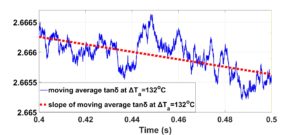May 2022

I am particularly happy and honored to join Daniel Dietmeyer from San Diego Gas & Electric in leading the Distribution Task Team (DisTT) at the North American Synchro Phasor Initiative (NASPI).
NASPI was founded in 2003 as the Eastern Interconnection Phasor Project, it is funded by the US Dept. of Energy, and is supported by the Pacific Northwest National Laboratory (PNNL) and the Electric Power Research Institute (EPRI). It is the largest collaboration of academics, industry practitioners and standardizing bodies for the development, use, understanding and promotion of methods and technologies based on synchronized measurements of voltage and current waveforms in power systems. These measurements with granularity of at least 30 per second and which are time synchronized via satellite across large grids, allow us to better analyze and control the stability and the security of the electrical grid.

Within the framework of DisTT, synchronized measurements enable the detection of faults, increase of hosting capacity of renewables, monitoring equipment health and others functions. At the current stage, DisTT focuses on the medium voltage beyond the substation.
This great opportunity and responsibility could not have been possible without the mentorship, support and inspiration that Sascha von Meier from UC Berkeley has gracefully offered me. I take over her role in leading DisTT in the hopes I can achieve half of what she did! Also, many thanks to Jeff Dagle (PNNL and chair of NASPI) for welcoming me on board.


